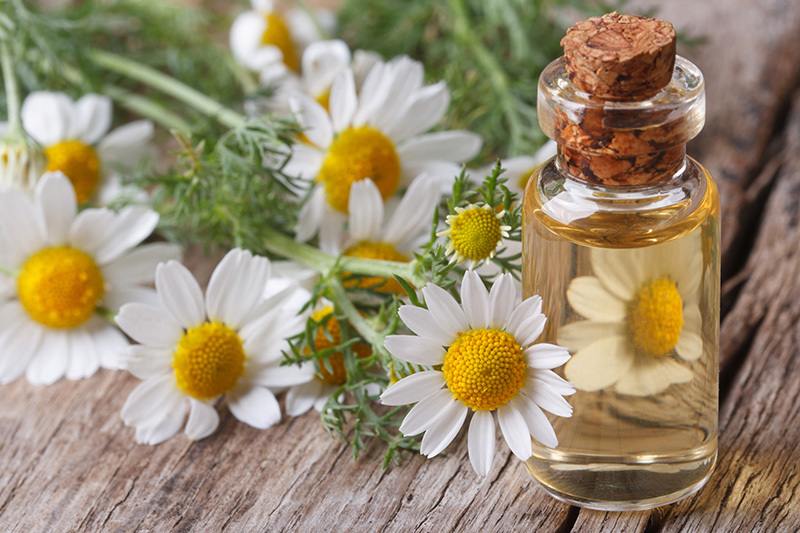Exploring What Peony Flower Colors Represent
Posted on 18/08/2025
Exploring What Peony Flower Colors Represent: An In-Depth Guide
Peonies are among the most beloved and beautiful blooms in the world of flowers. Their lush petals, intoxicating fragrance, and mesmerizing color array make them a favorite for gardens, bouquets, and special events. But did you know that each peony flower color carries its own meaning? Exploring what peony flower colors represent can add depth and thoughtfulness to your floral arrangements, gifts, and personal garden designs. In this article, we'll delve into the fascinating symbolism behind different shades of peonies, helping you to choose the perfect hue for every emotion or occasion.

Understanding the History and Symbolism of Peony Flowers
Originating in Asia, peonies have been prized for centuries in China, Japan, and Europe. They have graced imperial gardens, inspired artists, and featured in traditional medicine. The name "peony" comes from the Greek myth of Paeon, a student of Asclepius, the god of medicine, highlighting its ancient medicinal value.
Peonies symbolize more than mere beauty. In different cultures, these flowers represent fortune, romance, prosperity, and honor. By knowing the history and cultural contexts, we can better appreciate what peony flower colors represent and why they hold such a special place in our hearts.
The General Meanings of Peonies
- Prosperity and Wealth: Peonies are often linked to abundance and prosperity, making them popular for weddings and business openings.
- Romantic Love and Marriage: They frequently symbolize romance and a blissful marriage.
- Honor and Respect: In some cultures, peonies symbolize nobility and respect.
- Healing and Well-Being: Historically used in traditional medicine, they also represent good health and healing.
Now, let's explore what individual peony flower colors mean.
Interpreting What Peony Flower Colors Represent
1. Pink Peonies: Love, Romance, and Grace
Pink peonies are perhaps the most iconic and popular of all. Their ruffled, blushing petals evoke feelings of warmth, affection, and gentle romance. If you're searching for what pink peony flower colors represent, you'll find that they're deeply associated with:
- Romantic Love: Perfect for weddings, anniversaries, and declarations of love.
- Femininity and Grace: Symbolize elegance, gentleness, and femininity.
- Good Fortune: In Chinese culture, pink peonies are thought to bring prosperity and new beginnings.
Pink peonies are ideal for bridal bouquets, gifts for a partner, or anyone you love dearly.
2. White Peonies: Purity, Innocence, and Apology
When considering what white peony flower colors represent, the words purity, innocence, and new beginnings naturally come to mind. White peonies convey a message that is both gentle and profound:
- Purity and Innocence: White peonies are widely seen as symbols of a pure heart and intentions.
- Apology: In some traditions, offering white peonies is a gesture of asking for forgiveness.
- New Beginnings and Farewell: They are appropriate for weddings and also for farewells or sympathy arrangements.
White peonies make beautiful additions to wedding bouquets or as expressions of sincere remorse and fresh starts.
3. Red Peonies: Wealth, Honor, and Passion
Exploring what red peony flower colors represent uncovers meanings of power, respect, and passionate love. In Chinese tradition, red is considered the luckiest color, making red peonies highly esteemed:
- Honor and Respect: Red peonies often feature in celebrations and as tokens of esteem.
- Wealth and Success: Associated with high status and good fortune, popular for business openings and holidays.
- Passionate Love: Symbolize deep, fervent affection and desire.
Red peonies are a striking choice to show admiration, celebrate achievements, or heat up a romantic occasion.
4. Yellow and Gold Peonies: Vibrancy, Friendship, and Renewal
What do yellow peony flower colors represent? These rare and radiant blooms shine with sunny optimism, happiness, and renewal. Their meanings include:
- Joy and Positivity: Yellow represents happiness and cheerful energy.
- Friendship: Similar to yellow roses, yellow peonies symbolize friendly affection and support.
- New Beginnings: Perfect for graduations, life changes, and housewarmings.
Gift yellow peonies for birthdays, friend milestones, or any occasion where you wish to spread optimism and encouragement.
5. Purple Peonies: Mystique, Nobility, and Luxury
Purple peonies bring an air of mystery and regality. If you've wondered what the color purple means in peonies, it often denotes:
- Nobility and Respect: Historically, purple is a royal color, and these peonies carry that sense of grandeur.
- Mystery and Enchantment: Add an aura of intrigue to gardens and bouquets.
- Luxury: Perfect for making a lush, sophisticated statement.
Choose purple peonies for occasions that call for elegance, or when you want to create a sense of fascination and awe.
6. Coral Peonies: Energy, Enthusiasm, and Success
Coral peony flower colors represent energy, excitement, and dynamic new ventures. Their vivid hue is associated with:
- Enthusiasm and Passion: Great for celebrating energetic new starts.
- Success and Confidence: Coral peonies symbolize boldness and the drive to succeed.
- Transformation: Ideal for supporting those undergoing change or pursuing new opportunities.
Coral peonies make excellent gifts for recent graduates, entrepreneurs, or anyone leaping into a new phase of life.
7. Blue Peonies: Rarity, Imagination, and the Unattainable
True blue peonies are extremely rare, and most often, blue-tinted varieties are achieved through artificial coloring. Nevertheless, if you want to know what blue peony flower colors represent, they embody:
- Mystery and Imagination: Blue, being unusual in nature, conjures wonder and creativity.
- Calm and Tranquility: Blue peonies provide a sense of peace and serenity.
- The Unattainable: Often seen as representing dreams and desires just beyond reach.
Blue peonies are perfect for artistic souls, dreamers, and anyone needing inspiration or calm.
Choosing The Right Peony Color for Every Occasion
Selecting the ideal peony color isn't merely about aesthetics; understanding what peony flower colors represent can help you convey deeper emotions or wishes. Here are some practical tips for matching peony colors to life's special events:
- Weddings: Opt for pink, white, or blush peonies to symbolize romance, marriage, and new beginnings.
- Anniversaries: Choose red or purple peonies to celebrate passionate love and honor long-lasting bonds.
- Business Milestones: Red or gold peonies are perfect for conveying prosperity and triumph.
- Apology or Remorse: White peonies express sincere apologies and the wish for a new start.
- Friendship: Yellow peonies spread joy, fresh energy, and supportive warmth.
- Celebrating Achievements: Coral peonies are energizing and symbolize optimism and success.
- Sympathy or Farewell: White or soft blush peonies offer comfort and send wishes for peace.
Popular Peony Color Combinations and Their Meanings
- Pink and White: Implies gentle love, purity, and new romantic beginnings.
- Red, Gold, and White: Conveys celebration, honor, and best wishes for prosperity.
- Yellow and Coral: Energizes and brings a fresh, joyful statement to any arrangement.
- Purple and Pink: Offers an elegant and mysterious beauty, perfect for special occasions.
Peony Flower Color Meaning by Culture
While peony flower color symbolism spans the globe, there are some cultural nuances worth appreciating:
- China: Peonies in red and pink hues are national emblems and stand for wealth and prosperity.
- Japan: White peonies symbolize bravery, while pink suggests feminine charm.
- Victorian England: Peonies symbolized shyness and bashfulness since it was believed people hid in the petals.
- Modern Western Cultures: Largely associated with romance, elegance, and luxury, especially in weddings and high-end events.

The Lasting Appeal of Peonies
Whether you're a flower enthusiast, a wedding planner, or someone looking to send a meaningful bouquet, knowing what peony flower colors represent enriches your gift and your experience with these breathtaking blooms. Their lush, voluminous forms and broad spectrum of vibrant colors mean there's a peony for every sentiment and every celebration.
To summarize, here's a quick guide to peony flower color meanings:
- Pink: Love, romance, femininity
- White: Purity, innocence, new beginnings, apologies
- Red: Honor, passion, respect, prosperity
- Yellow: Friendship, happiness, optimism
- Purple: Nobility, luxury, mystery
- Coral: Energy, confidence, transformation
- Blue: Imagination, tranquility, the unattainable
Tips for Growing and Caring for Peonies
- Sunlight: Most peonies prefer full sun to thrive and produce vibrant blooms.
- Soil: Well-draining, fertile soil ensures healthy root development and lush flowers.
- Watering: Keep soil moist, especially during the blooming season, but do not overwater.
- Pruning: Trim faded blooms to encourage new growth and maintain plant health.
- Spacing: Provide enough room for airflow; this helps prevent fungal disease.
By giving your peonies proper care, you'll enjoy their vibrant colors and deep symbolism year after year.
Conclusion: The True Meaning Behind Peony Flower Colors
Peonies are more than just a feast for the eyes--they are embedded with rich meanings and cultural history. Whether you're expressing heartfelt love with pink peonies, offering forgiveness with white, or celebrating prosperity with red, understanding what peony flower colors represent provides another layer of beauty to these blooms.
So, next time you gaze at a lush peony bouquet or plan your garden, remember: every shade has a story. By choosing the right colors, you can convey your emotions perfectly--and let the timeless beauty of peonies speak volumes.
Explore the world of peony color meanings and let your next floral gesture be as meaningful as it is exquisite!
Latest Posts
Ensure Your Poinsettias Flourish Beyond the Holidays
Unveiling Tricks to Enhance Poinsettia Longevity
Ultimate Guide to Low Maintenance Office Plants







